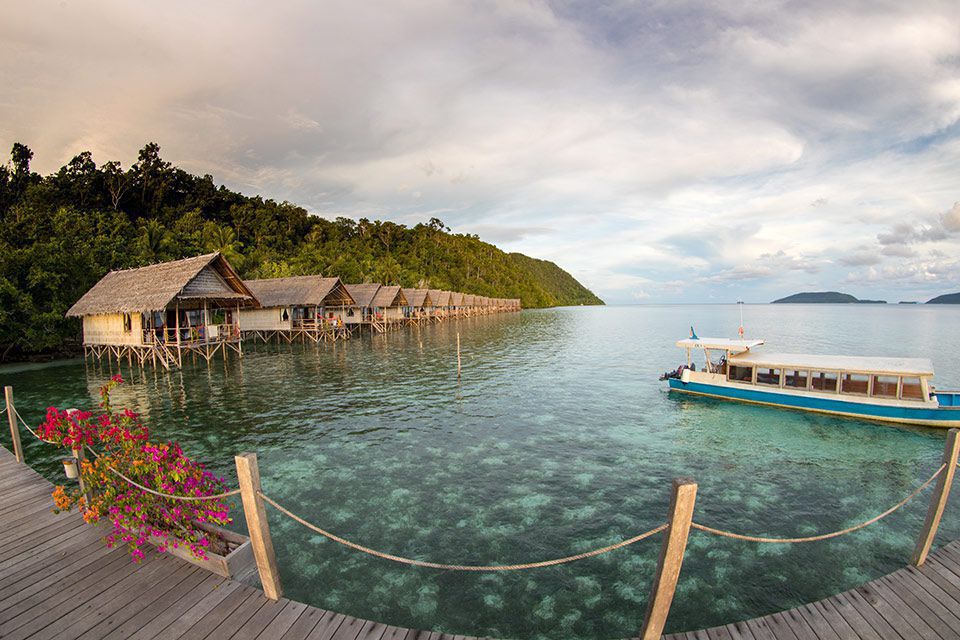RAJA AMPAT, WEST PAPUA INDONESIA
Raja Ampat is the global epicentre for marine life & fauna
Macro
8/10
Wide
10/10
Diversity
10/10
Abundance
10/10
Health
10/10
The island of Raja Ampat
The Raja Ampat Islands consist of three main groups: the Batanta Islands, the Manokwari Islands, and the Misool Islands. The Raja Amat Archipelago consists of more than 1,000 islands spread across 2,500 kilometers (1,550 miles) of ocean. The area has been inhabited by people since at least 3,000 years ago. Today, there are approximately 200,000 residents living in the region. Each group contains several smaller islands. The largest island in the region is Batanta Island, which covers an area of 4,845 square kilometers (1,906 square miles).
Exploring Raja Ampat
The wildlife of Raja Ampat is unique because it includes both land animals and marine life. There are more than 1,000 species of birds, reptiles, mammals, fish, and invertebrates found here. Lying in the heart of the Coral Triangle, the Raja Ampat holds the prestigious title as the most marine bio-diverse place on earth – quite a title; but also a fact. At its most recent count in 2011 the region was recognized to contain 1427 reef fishes, over 600 coral species (75% of the world’s coral species can be found here), not to mention the pelagic life that is abundant in the area.
The Raja Ampat Islands are home to many unique species of flora and fauna, including the world’s largest coral reef system. The diversity of wildlife in Raja Ampat is due to the fact that there are many islands scattered throughout the archipelago. These islands provide habitat for different types of flora and fauna. For example, the island of Batanta has a large population of sea turtles, while the island of Waigeo has a large number of dugongs (sea cows).
Scuba Diving In Raja Ampat,
To dive in Raja Ampat is breathtakingly spectacular, and truly unforgettable. Hard and soft corals compete for space on reefs that are bursting with life and colour. Swarms of small fish such as damsels, fusiliers and anthias mill about on the reef flats, while not too far away from the large schools of tuna, trevally and mackerel congregate. Batfish, surgeonfish and barracuda aggregate around jetties and reef points, while angel and butterflyfish decorate both the reef flats and jagged coral towers that are home to abundant marine life. Large fish species include napoleon wrasse, bumpheads and giant sweetlips, and being in shark sanctuary, not a day goes by where divers don’t spot one of the many species of reef shark in the area. And of course, there are the manta rays: reef mantas at nearby cleaning stations, the majestic oceanic manta in open water, and during the right season any given dive site may yield magnificent mantas gliding by. There are really no words to describe diving in this region; it must be experienced and is truly unforgettable. There are over 50 sites in the area and enough sea life to satisfy the most discerning scuba diver.
The People
The people of Raja Ampat live in small villages scattered throughout the islands. They rely heavily on fishing as their primary source of income. Many of them also work as boatmen, helping others navigate through the treacherous waters surrounding the islands. Their cultural practices are very similar to those of other Papuan cultures. The most important aspect of their culture is the belief in spirits called Wauwau. These spirits are believed to be responsible for everything from illness to death.They are friendly and great storytellers with amazing senses of humour.

Papua Explorers Resort
Papua Explorers Resort is located in the heart of the region, in the northwest tip of the Bird’s Head Peninsula of West Papua. Raja Ampat translates into English as Four Kings and gets its name from a local mythology about four kings that occupy the four big islands: Salawati, Batanta, Waigeo and Misool. It’s a stunning archipelago comprising over 1,500 small islands, hosting thousands of species some of which are endemic to the region.
Some scientific surveys reveal that the area has 603 hard coral species which represents more than 75% of all the species in the world. With its rich ecosystem and abundance of species, this is the bulls-eye of the Coral Triangle in every sense. Papua Explorers is located on the island of Gam and just along the coast of worldwide renowned Dampier Strait, only 10 to 15 minutes away from the most famous dive sites like Manta Point, Cape Kri, Mike’s Point, Sardines & Manta Sandi. I highly recommend staying with Papua Explorers as they are committed to protecting the area and sustainable practices.


